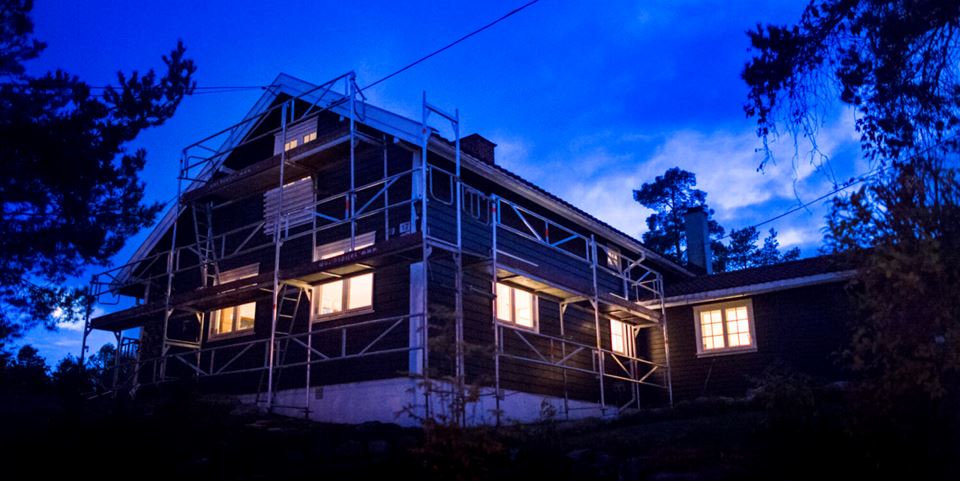A number of studies are indicating that in a few years, Norway will be facing a significant energy deficit. Ketil Lund, who is Director of the Norwegian Water Resources and Energy Directorate (NVE) has warned that the deficit will lead to persistently high electricity prices in the years leading up to 2030, resulting in a high risk of energy poverty.
Both the Energy Commission and the Environment Agency here in Norway have clearly stated that it will not be possible to achieve the country’s stated reductions in greenhouse gas emissions without the release of significant volumes of energy by means of efficiency measures.
Major investment in energy efficiency in buildings has the potential to enable the rapid and uncontroversial release of large volumes of energy that will help Norway both to avoid high electricity prices and achieve its stated climate change mitigation targets.
Equivalent to 3,400 wind turbines
In a recent report prepared by SINTEF and building developers Skanska under the auspices of the Zero Emissions Neighbourhoods (ZEN) research centre, we have calculated that it is possible to save as much as 13 TWh electricity by 2030, and 42 TWh by 2050, simply by making existing and future buildings more energy efficient.
Saving 42 TWh is the same as halving the electricity consumption of Norway’s current building stock and is equivalent to the energy generated by approximately 3,400 giant wind turbines.
If we can achieve savings on this scale, energy efficient buildings will effectively constitute Norway’s biggest ‘power plant’. Because in reality, in order to make existing and new buildings more energy efficient, we have to turn them into what we call ‘hidden power plants’.
Nothing is achieved without help
But all this energy saving potential cannot be realised on its own. Under current state measures and regulatory frameworks, electricity consumption by Norway’s building stock will increase in the years approaching 2030 and 2050 by 2 and 4 TWh respectively.
For this reason, a much more radical investment in energy efficiency measures is needed if Norway is to achieve the calculated potential reductions in electricity consumption by its building stock.
If the payback period for investment in energy efficiency measures is greater than ten years, many households and businesses will fail to implement the necessary measures. The ZEN report argues that in order to enable these households and businesses to choose to implement energy efficiency measures that are also socioeconomically viable, annual subsidies of the order of between 4 and 5 billion Norwegian kroner will be needed.
Can be achieved rapidly
We have already developed the technologies and systems that we require to achieve the potential savings needed to meet Norway’s 2030 and 2050 targets. If we can make the investments as proposed in the ZEN report, the technologies will be more energy efficient and less expensive than they are today.
We argue that energy efficiency measures in buildings can very effectively be used to create ‘hidden power plants’ in the years leading up to 2030. The same will not be as easy to achieve simply by developing new traditional plants. As NVE Director Lund has previously said to the online news agency E24: “We are receiving very few applications for the development of new hydropower, wind and solar power plants – and many of the plans being submitted are highly controversial”.
Since new electricity generation projects are proving to be difficult to achieve before 2030, the adoption of energy efficiency measures will be crucial if Norway is to avoid an energy deficit, keep electricity prices at low levels and achieve its climate change mitigation targets.
Release capacity in the grid
A key consequence of achieving major savings in electricity consumption by Norway’s building stock is that it will significantly reduce the country’s overall power requirement. Capacity in the distribution grid will be released, enabling electrification of the transport sector and the establishment of new green industries.
Grid operators Lede and Elvia are both reporting that they will have no free grid capacity across large parts of eastern Norway in the years leading up to 2035.
This means that it will not be possible to implement the green transition or achieve stated reductions in greenhouse gas emissions unless Norway’s politicians take radical action.
‘Action Plan’ simply not good enough
In October, the Norwegian government launched its energy efficiency Action Plan However, this plan entirely fails to meet the ambition set out by the Energy Commission to achieve electricity savings of between 15 and 20 TWh by 2030. We argue that now is the time to define clear targets and put in place the effective measures that we have proposed in the ZEN report. There is no need, nor indeed time, for more fact-finding studies.
The EU is currently very proactive in promoting the energy efficiency of buildings, as is illustrated by its high-level ‘Energy efficiency first’ principle. It has developed a strategy in which the ambition is to renovate as many as 35 million buildings and generate 160,000 new ‘green’ jobs in the construction sector.
The strategy will be financed using EU funds supplemented by contributions from individual EU countries. Germany has announced that it will be spending EUR 18.8 billion in the form of subsidies to support energy efficiency measures in buildings in 2024. If we were to transfer this investment to Norway in terms of relative population numbers, this would amount to an investment of NOK 13 billion, which is far higher than that currently being proposed by the Norwegian government.
Uncontroversial
In Norway, it has proved to be both very expensive, and frequently also controversial, to develop renewable energy sources and expand the energy grid for the purposes of avoiding an energy deficit, achieving stated climate change mitigation targets and creating new green industries.
In contrast, energy efficiency measures in buildings are for the most part uncontroversial. They are socioeconomically beneficial, they will reduce the load on the electricity grid and will contribute to major indirect reductions in greenhouse gas emissions in other industrial sectors.
An additional bonus is that energy efficient houses are healthier for those who live in them. Energy efficient buildings are also more resilient in the face of high and variable electricity prices. They will thus help to counteract the levels of energy poverty that are becoming an increasing problem here in Norway.
This article was first published in the technology magazine Teknisk Ukeblad on 30 November 2023, and is reproduced here with the permission of the magazine.


